
A Tale of Two Oilfields: Magwe Sites Highlight Disparities in Myanmar's Petroleum Industry
This photo essay is the sixth and final installment in NRGI's 2015 extractive industries photo documentary project, which aims to capture the complex political, environmental and social realities at resource extraction sites throughout Myanmar.
The atmosphere feels almost festival-like as I enter the Htankai oilfield, one of many located in central Myanmar's crude-rich Magwe region. An expanse of green tents and grey mud, the site of the country's “black gold rush” vibrates with the persistent hum of generators and a buzz of expectation.
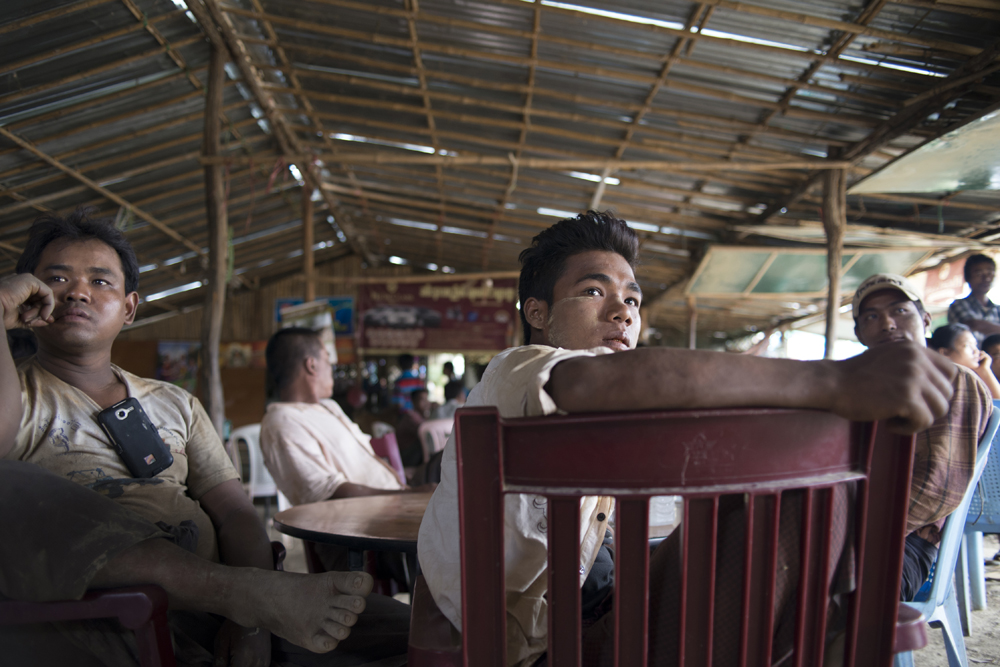
Workers watch a movie after lunch at a restaurant adjacent to the oilfield they are drilling in Minhla township, part of the Htankai oilfield. Photo by Matt Grace for NRGI
I've just arrived at an oilfield that was once controlled by the state-owned Myanma Oil and Gas Enterprise (MOGE). Landowners were allowed little influence over oil development and received few financial benefits from the lucrative industry during MOGE's tenure. In 2013, the state-owned company returned lands to local farmers for cultivation. Despite supposed restrictions on drilling, however, Htankai's oil industry has devolved into a free-for-all.
I approach an oilman who stands out from the crowds in his yellow hard-hat—it's the only article of safety gear I see during my stay in Htankai. U Han Htwe tells me he has followed oil around the country for years, relying on word of mouth for fresh information. He recently bought up two drill sites in this field. Gesturing to one of his nearby wells, U Han Htwe explains that the previous team failed to traverse the water layer, which must be penetrated in order to reach the precious oil below. He clearly loves the challenge and seems confident that his team can reap a healthy profit from the site. Including the $500 he paid for drilling rights, he has invested around $4,200 in the project.
On the surface, Htankai's oil business seems egalitarian. Private operators can negotiate directly with landowners and prices are based on potential profitability and yield. But the underbelly of the unregulated industry is terrifying. As I watch men weld together 20-foot-long pipes, the fumes seeping up from the oil reservoirs they are tapping ignite in mid-air. Vast areas of the site have been reduced to impassable quagmires of oily sludge. The footprint of oil operations continues to grow with new investments.
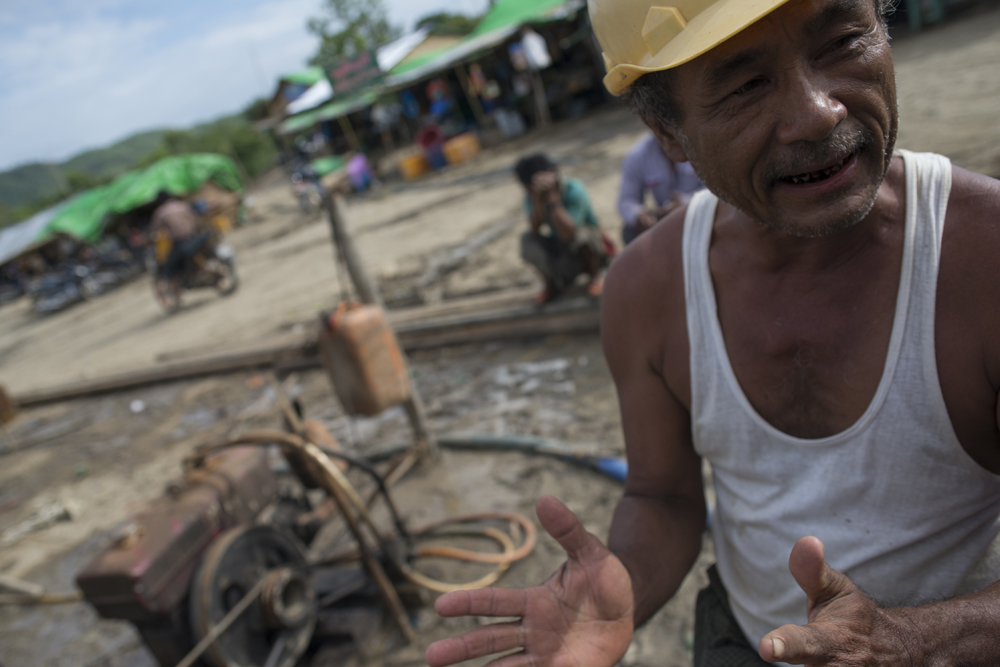
U Han Htwe next to one of two sites he was drilling in an oilfield in Minhla township. Photo by Matt Grace for NRGI
In contrast with the gritty yet accessible private operations in Htankai, government-run oil facilities remain largely unobserved. One of MOGE's most productive fields in Myanmar stretches up the Irrawaddy River from the town of Minbu, about 40 miles north of Htankai. When oil was discovered in the area in 1969, 13 villages and the surrounding farmland were absorbed into the Mann oilfield. Since then, an estimated 669 wells have been drilled and more than 120 million barrels of oil produced by MOGE and MPRL, a private company that was later contracted to operate the site.
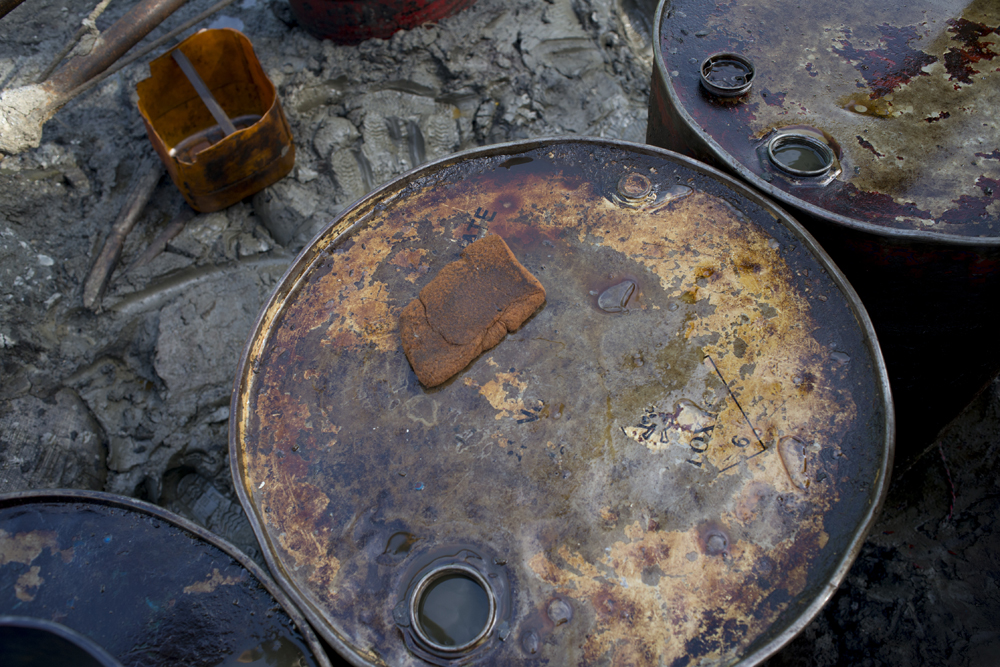
Oil barrels at an oilfield in Minhla township. Photo by Matt Grace for NRGI
Driving north of Minbu, I pass the three main entrances to the Mann oilfield property, which also serve as a point of access to villages and farms beyond. Each has an MPRL security guard and local police officer stationed below an array of signs declaring “No Entry” and “Restricted Area.” I eventually enter the property on motorbike via a dirt track. The landscape could hardly look more different than Htankai. Large, autonomous rigs pump silently as farm workers tend to crops in the surrounding fields. There's no obvious pollution or oppressive hum of generators. The distance between wells makes it difficult to take a photograph with more than three rigs in the frame. Were it not for the signs at every turn informing me that I'm in a heavily controlled area, I would never realize that these 10 square miles of farmland are subject to one of the country's highest levels of civil restriction.
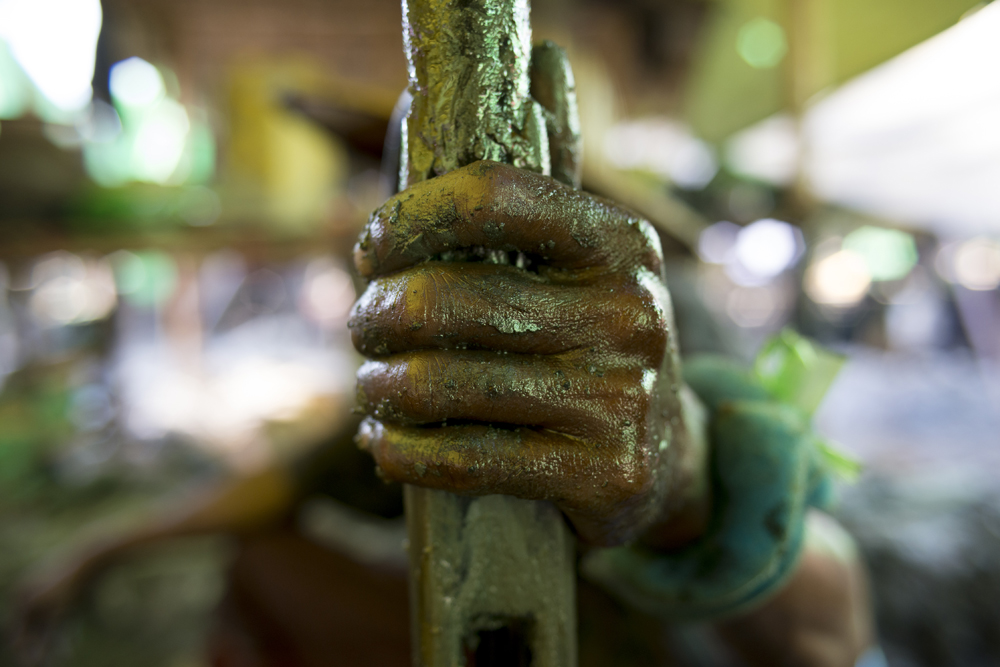
A worker mans his small site at an oilfield in Minhla township. Photo by Matt Grace for NRGI
I meet with Soe Win, who lives in Meh Beh Kone village, within the first area to be developed when MOGE began operations. Meh Beh Kone is now the most heavily drilled village of the 13 situated within the Mann oilfield perimeter. Soe Win explains that the entire area is classified as Code 144, a designation most commonly used to prevent civilians entering sensitive military or government sites or conflict areas. In civilian zones, Code 144 may also be used to enforce curfews and exert control during times of civil unrest. Soe Win tells us that none of these restrictions apply to Meh Beh Kone, but that the designation bars citizens from building—even within the boundaries of their own personal property.
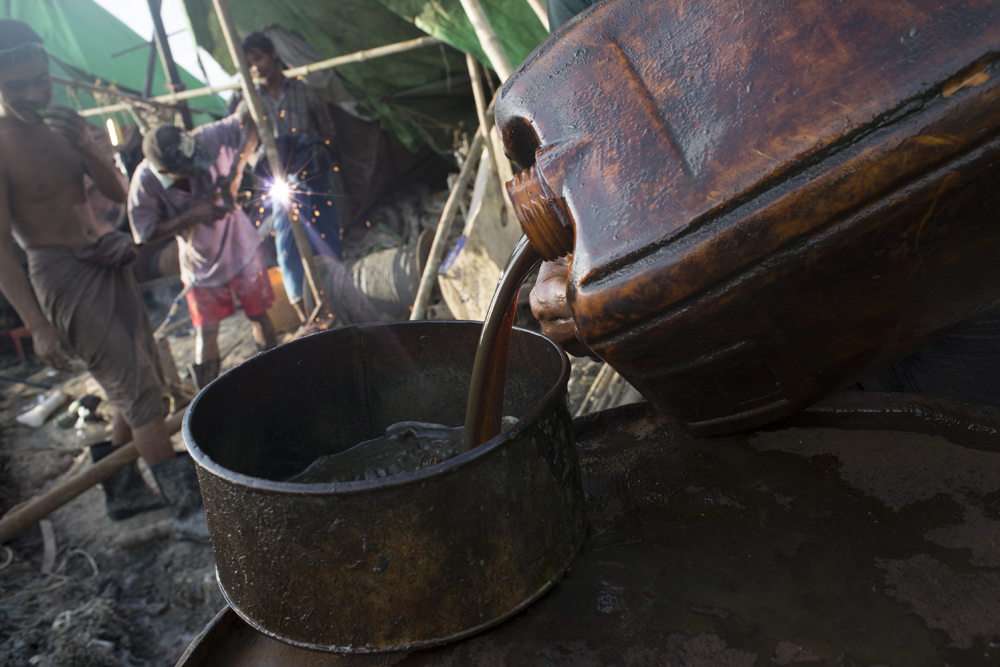
Oil is transferred into a barrel while workers weld pipes leaking fumes at an oilfield in Minhla township. Photo by Matt Grace for NRGI
The Code 144 classification is of concern for those who like Soe Win are seeking compensation from MOGE and MPRL for land seizures and the negative effects of petroleum infrastructure on local livelihoods. He explains that drilling new wells disturbs the surrounding area for months and can pollute it for years. Above-ground pipes associated with hundreds of wells now crisscross the landscape, disrupting ploughing and planting. And despite having six wells on his farmland, Soe Win says he has never received financial or other benefits from oil extraction. Demonstrating land ownership in order to make effective legal claims against MOGE and MPRL has proven difficult under Myanmar's bureaucratic, confusing registration process.
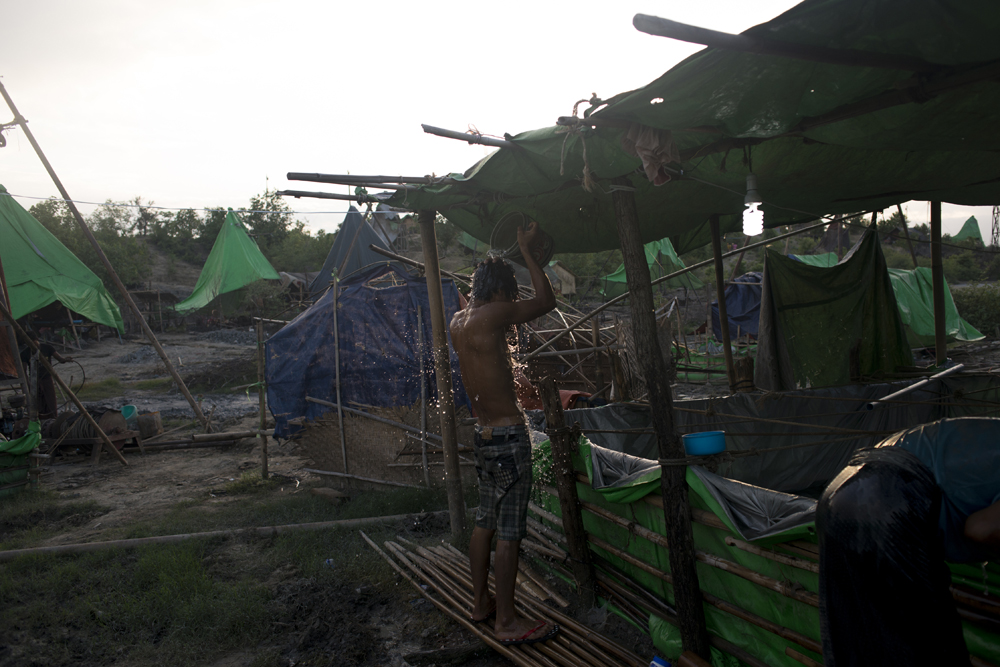
A worker bathes after his shift at an oilfield in Minhla township. Photo by Matt Grace for NRGI
According to Soe Win, not a single landowner has received compensation for any of the first 668 oil wells drilled by MOGE and MPRL. However, local civil society organizations have supported retroactive claims by residents in recent years. In what is hopefully a sign of changing times, a payment of $3,100 was reportedly made for permission to sink well 669.
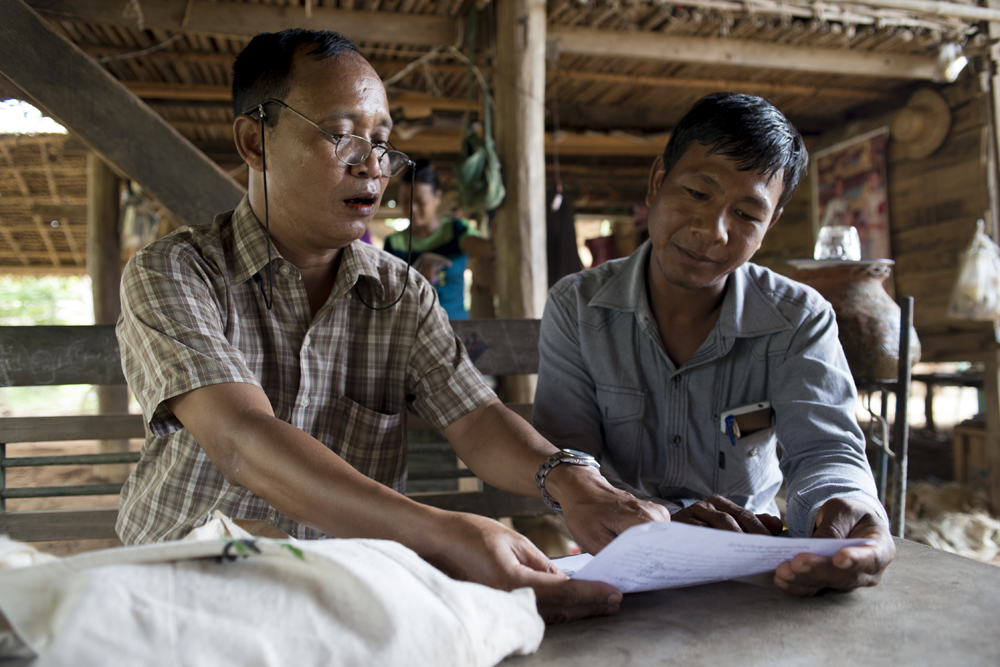
U Thant Zin of the Ayeyarwaddy West Development Organisation talks with Ko Soe Win, a farmer from Meh Beh Kone village in Minbu township, part of the Mann oilfield. Photo by Matt Grace for NRGI
After three days in orderly Mann, I return to the carnival of Htankai. I track down U Han Htwe, who confides that his team has not managed to break through the water layer that had stymied the previous owner. Although he remains upbeat, even U Han Htwe's sunny disposition can't hide the obvious pressure he is under to recoup his investment.
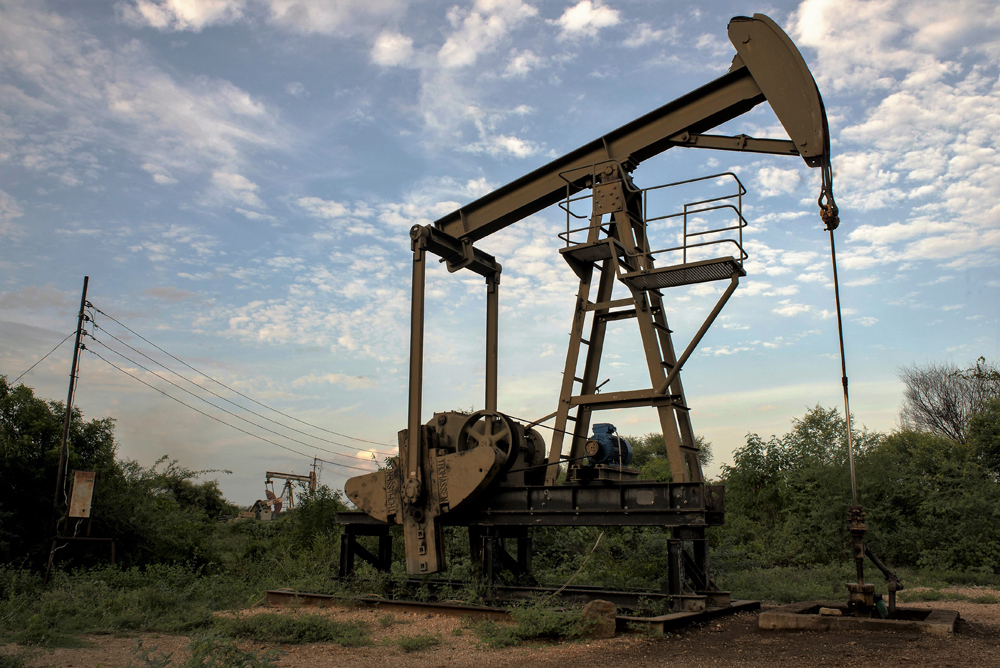
Oil wells dot the farmland of Minbu township, part of the Mann oilfield. Photo by Matt Grace for NRGI
The Htankai and Mann projects provide starkly different, but equally troubling, illustrations of the excesses in Myanmar's oil industry. In Htankai, I sense that landowners, operators, and workers have a chance to profit from lucrative crude oil production. However, dangerous conditions and unmitigated pollution overshadow these opportunities. In contrast, residents at Mann field cannot meaningfully participate in decision making or realize the benefits of oil extraction, but the site's operators comply with government regulation and maintain security in the area. As I depart Magwe, I can't shake the feeling that a happier medium between these two projects must be possible.
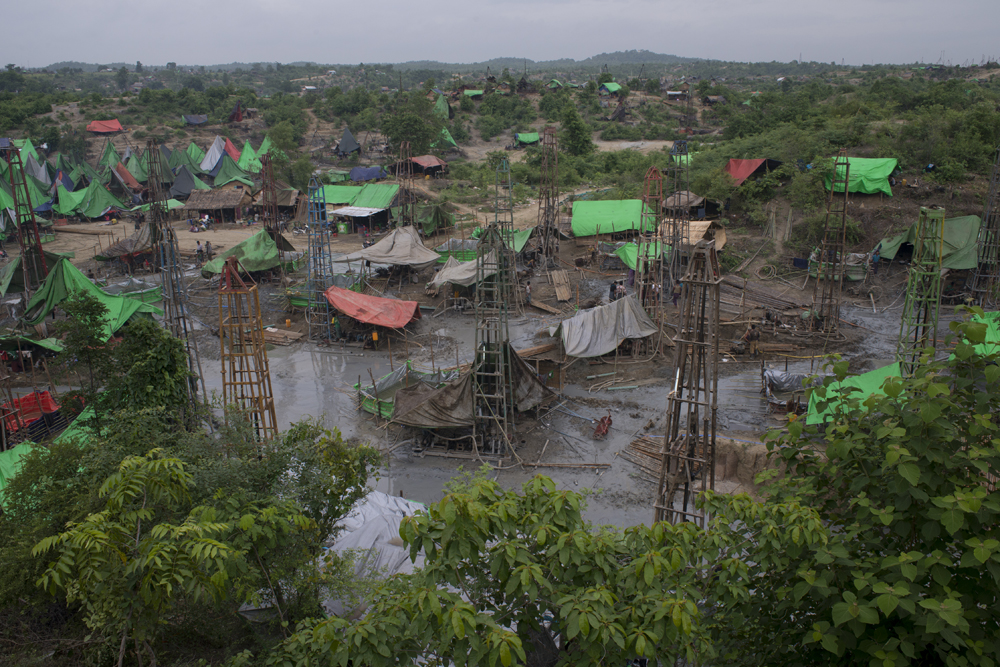
An expanding oilfield in Minhla township. Photo by Matt Grace for NRGI
Matt Grace is a documentary photographer and writer based in Yangon. He is also a founder of Myanmar Deitta, an organization that supports documentary photographers and filmmakers in Myanmar.
The views expressed here are the author's own, and do not represent NRGI. NRGI does not guarantee the accuracy, completeness and validity of any statements made within this article. NRGI accepts no liability for any errors, omissions or representations.
